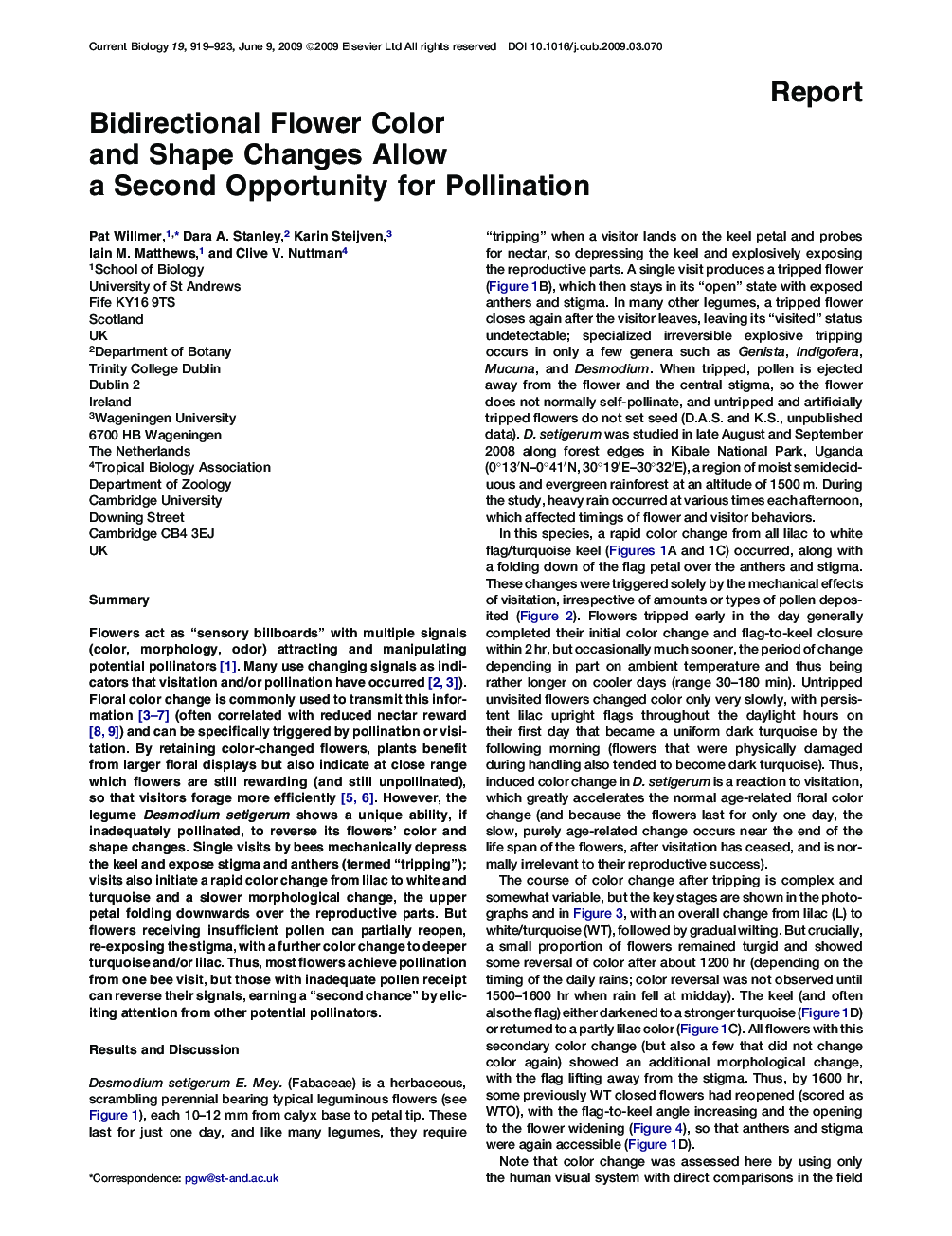| کد مقاله | کد نشریه | سال انتشار | مقاله انگلیسی | نسخه تمام متن |
|---|---|---|---|---|
| 2043500 | 1073363 | 2009 | 5 صفحه PDF | دانلود رایگان |

SummaryFlowers act as “sensory billboards” with multiple signals (color, morphology, odor) attracting and manipulating potential pollinators [1]. Many use changing signals as indicators that visitation and/or pollination have occurred 2 and 3). Floral color change is commonly used to transmit this information 3, 4, 5, 6 and 7 (often correlated with reduced nectar reward 8 and 9) and can be specifically triggered by pollination or visitation. By retaining color-changed flowers, plants benefit from larger floral displays but also indicate at close range which flowers are still rewarding (and still unpollinated), so that visitors forage more efficiently 5 and 6. However, the legume Desmodium setigerum shows a unique ability, if inadequately pollinated, to reverse its flowers' color and shape changes. Single visits by bees mechanically depress the keel and expose stigma and anthers (termed “tripping”); visits also initiate a rapid color change from lilac to white and turquoise and a slower morphological change, the upper petal folding downwards over the reproductive parts. But flowers receiving insufficient pollen can partially reopen, re-exposing the stigma, with a further color change to deeper turquoise and/or lilac. Thus, most flowers achieve pollination from one bee visit, but those with inadequate pollen receipt can reverse their signals, earning a “second chance” by eliciting attention from other potential pollinators.
Journal: - Volume 19, Issue 11, 9 June 2009, Pages 919–923